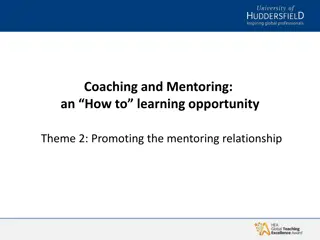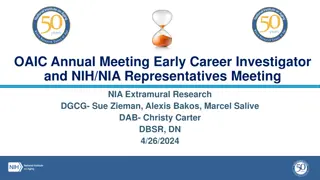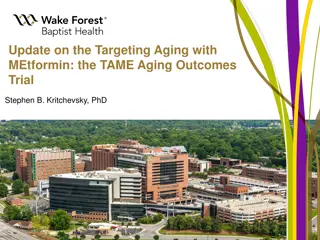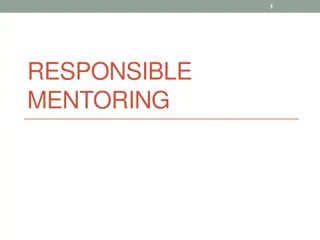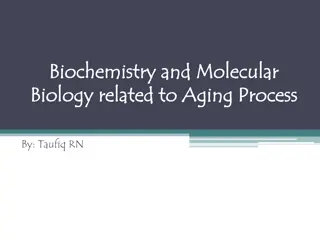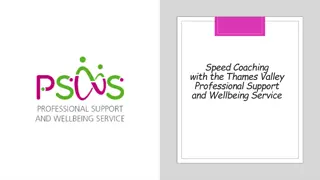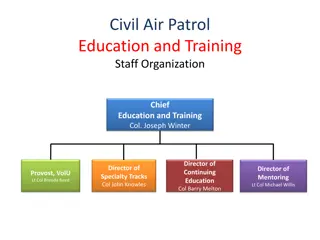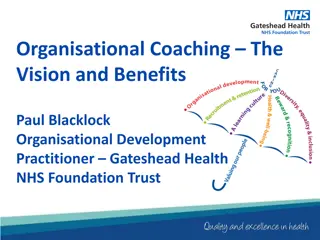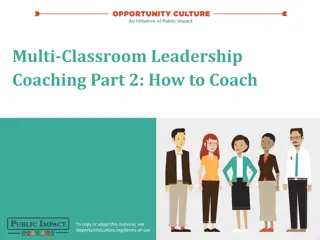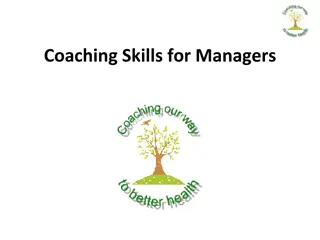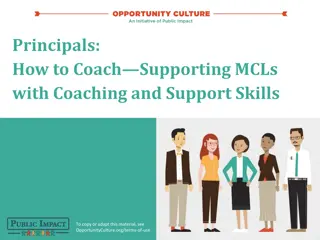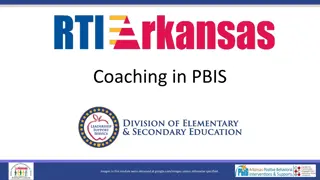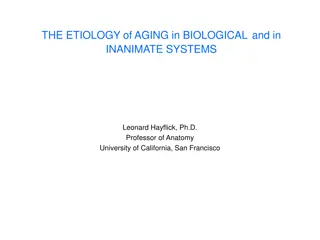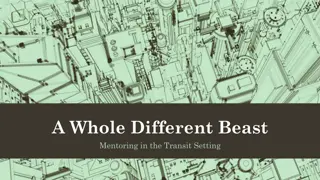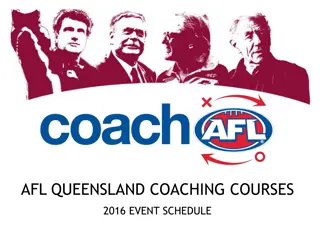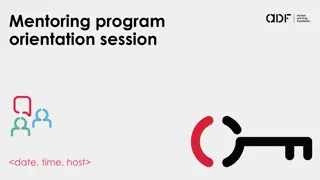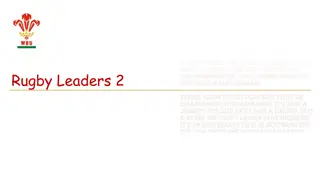Exploring Coaching and Mentoring in Aging and Adult Services
Dive into the world of coaching and mentoring within the Division of Aging and Adult Services. Understand the fundamental differences between coaching and mentoring, discover the qualities of effective coaches, and explore how coaching can enhance staff development and team performance. Uncover key learning objectives and engage in thought-provoking conversations to elevate your coaching abilities.
Download Presentation

Please find below an Image/Link to download the presentation.
The content on the website is provided AS IS for your information and personal use only. It may not be sold, licensed, or shared on other websites without obtaining consent from the author. Download presentation by click this link. If you encounter any issues during the download, it is possible that the publisher has removed the file from their server.
E N D
Presentation Transcript
Supervisor as Coach Supervisor as Coach DAAS - Division of Aging and Adult Services
Housekeepingfor Virtual Platform POTENTIAL TECHNICAL GLITCHES MUTE/ CHAT BOX EMOJIS AND ICONS IF YOU NEED TO STEP AWAY VIDEO CAMERA UNMUTE DAAS - Division of Aging and Adult Services
Supervisor as Coach Facilitator s Name Organization DAAS - Division of Aging and Adult Services
Conversation starters What is a coach? What are some of the qualities of a coach that you have experienced? DAAS - Division of Aging and Adult Services
Supervisor as Coach Learning Objectives 1. Explain the similarities and differences between coaching and mentoring 2. Identify when coaching and mentoring should be used. 3. Explain how coaching plays a critical role in staff development to create high performing teams. 4. Identify strengths and areas for development and improvement in coaching abilities. DAAS - Division of Aging and Adult Services
Supervisor as Coach Section 1 Similarities & Differences Between Coaching & Mentoring DAAS - Division of Aging and Adult Services
A coach is A mentor is DAAS - Division of Aging and Adult Services
Provides guidance to an individual to help them reach their full potential Engages an individual in a thought-provoking creative process A coach Uses skillful questioning Doesn t offer solutions Prompts individuals to expand their capacities DAAS - Division of Aging and Adult Services
Shares their knowledge, skills and experience Acts as an experienced and trusted advisor Imparts their own experience and advice to those with less experience A mentor Is likely to be a SME and have senior knowledge Shares ideas about how to be successful in a specific position and future roles DAAS - Division of Aging and Adult Services
Similarities Between Coaching and Mentoring Involve a 1:1 relationship Involve a development plan/outline of goals Core purpose is development Some mentors ask questions and coaches share advice Can both be a part of a leadership development program Help people get to where they want to go DAAS - Division of Aging and Adult Services
Subject Coaching Mentoring Coaching tends to address more immediate topics related to skill development and performance. Goals are clarified and a plan is developed of how to get there. The coach helps the individual learn how to achieve the goal. Generally focused on long-term career development. Clarifies where the individual wants to go with their career professionally and what future roles/positions they would like to hold. A plan is developed of how to get there often with the mentor s input. The mentor is available for the individual to use as a resource. More of a long-term relationship lasting a year or longer. Focus Relationship maybe more short-term (approx. 6 months to a year) with a specific goal in mind. Timeframe More structured with regularly scheduled meetings; weekly or bi- weekly. Coach is more likely to drive the sessions with the individual. Meetings tend to be more informal and on an as needed basis as required by the prot g . Prot g is more likely to drive the sessions with the mentor. Structure It is co-created by coach and coachee to meet the coachee s specific goals. The agenda is set by the prot g and the mentor supports the agenda. Agenda Assists the individual with finding their own solution rather than offering advice or opinions. Coach does not necessarily discuss personal experience. Asks thought provoking questions which helps the coachee make important decisions and develop desired skill sets. Is specific and measurable. Goals are defined in advance and can be tracked and measured. Demonstrates improvement and change within the desired performance area. Assists the individual with finding their own solutions but may share advice or their own personal experiences. The prot g is likely to ask more questions, tapping into the mentor s expertise and perspective. Interaction Structure Interest is in the overall development of the prot g . Benefits can include improved morale and higher staff retention however more difficult to measure key indicators. Evaluation
Supervisor as Coach Section 2 Section 2 Coaching & Mentoring for Staff Development DAAS - Division of Aging and Adult Services
Role of APS Supervisor as a Mentor Acts more like a teacher Shares previous experiences & lessons learned May pair new staff with peer mentors As staff skills develop, role can shift to be more of a coach DAAS - Division of Aging and Adult Services
Role of APS Supervisor as a Coach Acts more like a facilitator rather than a teacher Uses guided questions to build critical thinking skills Helps learners realize their own potential to analyze, reflect and problem solve DAAS - Division of Aging and Adult Services
Why is coaching important? Increases Accountability Builds Self-Awareness Increases Employee Engagement Prepares Workforce Increases Clarity of Goals and Objectives DAAS - Division of Aging and Adult Services
Motivate Support skill development Build confidence Offer a different perspective When do we coach? Challenge To . Support staff with feeling listened to, respected, and understood DAAS - Division of Aging and Adult Services
How Coaching Can Change Your Work Better Conversations Better Relationships Model Success Lead anyone, anywhere DAAS - Division of Aging and Adult Services
Listening like a coach is Being totally present Preparing your thoughts to listen rather than speak Listening beyond the words Listening to the emotions, strengths, values, and passion DAAS - Division of Aging and Adult Services
Temporarily removing ones own agenda Using one s own strengths to develop staff Thinking like a Coach is Partnering with staff DAAS - Division of Aging and Adult Services
Ready Ready - - Set Minute Coaching Questions Set - - Go! Go! 5 5- -Minute Coaching Questions What options do you see regarding this situation? What do you see as a challenge? What are your thoughts about the best way to approach this? What might get in your way? What do you think is the next step? How can I support you? When can I check back with you? DAAS - Division of Aging and Adult Services
Supervisor as Coach Take a Break DAAS - Division of Aging and Adult Services
Group Activity Discuss a difficult conversation you ve had with one of your staff: What would you have wanted more of to make it effective? What would you have wanted less of?
Supervisor as Coach Section 3 Complete a Coaching Self Assessment for Strengths Identification & Areas for Development DAAS - Division of Aging and Adult Services
What is a strengths-based approach? Something that you re good at What you are known for What comes easily to you Energizing, feels good Can be developed Can atrophy due to lack of use Drives performance Flow DAAS - Division of Aging and Adult Services
Decreased burnout & turnover Benefits of Benefits of strengths strengths- - based based approach on approach on Increased Motivation Better Managed Workload work work performance performance Increased Productivity Improved Team Performance DAAS - Division of Aging and Adult Services
It focuses on what is right, what is working and what is strong. The strengths- based approach is founded on five core principles: Strengths are part of our basic human nature; every person has them and deserves respect for them. Our areas of greatest potential are in the areas of our greatest strengths. We succeed by fixing our weaknesses only when we are also making the most of our strengths. Using our strengths is the smallest thing we can do to make the biggest difference. DAAS - Division of Aging and Adult Services
ASTD Coaching Self-Assessment Form DAAS - Division of Aging and Adult Services
Create an Action Plan Strength How can you leverage these strengths to coach staff 1. 2. 3. Strength to Upgrade What are your next steps? What support do you need? How will you monitor your progress? 1. Conversation starters 2. 3. DAAS - Division of Aging and Adult Services
Look at the behaviors you identified as your strengths, prioritize and list your top 2-3 strengths below. Assessment Activity: How can you leverage these strengths to coach your staff? According to your self- assessment, which skills or traits were your lowest scores? Prioritize these in the order you think are the most important for you to improve to better coach your staff -- list the 3 most important. DAAS - Division of Aging and Adult Services
Supervisor as Coach Section 4 Coaching Strategies for Performance & Development DAAS - Division of Aging and Adult Services
Evaluation Monitoring Evaluating Evaluating Performance Performance Documenting & & Observation Development Development DAAS - Division of Aging and Adult Services
Engaging The 5 E s for Elevating the Coaching Conversation Evaluating Evoking Establishing Exploring DAAS - Division of Aging and Adult Services
The 5 Es Sample Statements & Questions Conversation for Development DAAS - Division of Aging and Adult Services
The 5 Es Sample Statements & Questions The 5 E s Sample Statements & Questions Conversation for Performance Conversation for Performance DAAS - Division of Aging and Adult Services
What do you want to discuss? What is your objective for this conversation? Coaching Conversation Planner How will progress or success be measured? What are the needs of this person/team you need to consider? What are the opportunities & challenges in this discussion or the underlying situation? DAAS - Division of Aging and Adult Services
Work in pairs with a partner. Coaching Conversation Dyadic Roleplay Activity Take 5 minutes prior to using your Coaching Conversation Planner to draft coaching questions that you will ask your staff in each of the 5 E s process. (It can be a conversation for Development or Performance.) Take turns roleplaying the supervisor and the staff member with your partner, moving through the 5 E s. Switch roles after 5 minutes. Evaluating Evaluating Performance & Performance & Development Development We will debrief together as a large group after 15 minutes. DAAS - Division of Aging and Adult Services
Supervisor as Coach Supervisor as Coach Transfer of Learning Activity Transfer of Learning Activity Goal # 1 - Develop and implement an Action Plan of how you will leverage your 2-3 Strengths as a Coach. Goal # 2- Design and implement an Action Plan to improve 2-3 strengths you want to upgrade at the lower end of your Strengths Assessment. Goal # 3- Using your Coaching Planner draft a coaching conversation for development or performance using the 5 E s process and Ready Set Go! 5 Minute Coaching Questions on P. 35 of you Participant Guide. Goal # 4- Meet with two of your staff and have a coaching conversation in the next four weeks. Be prepared to debrief and provide feedback about the Strengths Action Plan and Coaching Conversation if this training will be followed by a Boost Session. DAAS - Division of Aging and Adult Services
Closing and Evaluations Closing and Evaluations Thank you for your participation! Thank you for your participation! DAAS - Division of Aging and Adult Services


